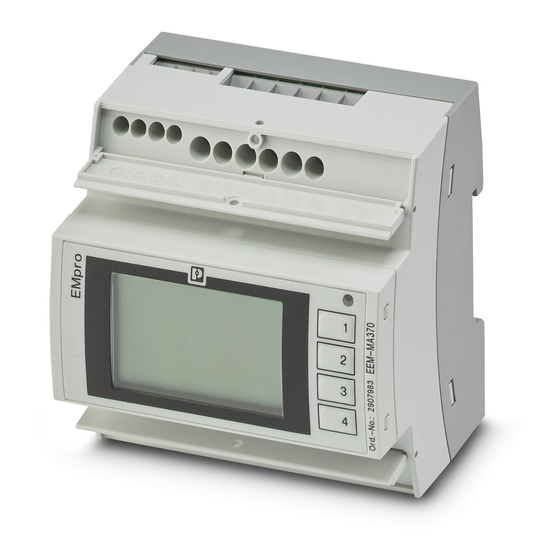Summarization of Contents
For Your Safety
Safety Notes and User Qualification
Covers essential safety instructions, user qualifications, and product application fields.
Device Description
Product Overview and Features
Introduces EMpro devices, their capabilities, advantages, and installation types.
Mounting and Installation
Installation Procedures and Grid Types
Details installation steps, pin assignments, supply connections, and supported grid types.
Operating and Indication Elements
Device Interfaces and Controls
Describes device displays, buttons, LEDs, and interface indicators for different models.
Basic Device Configuration
Configuration via Display
Guides through initial setup via display: language, network, grid, current/voltage input, and PIN.
Configuration via Web Server
Details initial configuration via web server: network, grid, current/voltage input, and overview.
Device Settings and Information
Language, Date, Time, and Display Settings
Covers language selection, date/time settings, and display adjustments (contrast, brightness).
Device Information and Reset
Explains how to retrieve device info and reset the device to factory default settings.
Configuration Management
Access Control and Data Transfer
Details password management, PIN settings, and transferring configuration data.
Measuring Technology
Meter Readings and Statistics
Explains meter readings (energy, hours) and statistical analysis like average values.
Functions
Digital Input and Output Operations
Covers digital input functions (pulse, tariff, sync, alarm ack) and digital output functions (impulse, state, alarm).
Tariff Selection and Logic Gates
Details tariff selection methods and using logic gates for alarm linking.
Firmware Update and Security
Guides through firmware updates, execution, and security considerations.
Communication Interfaces
Ethernet and Modbus Protocols
Covers Ethernet IP addressing, Modbus/RTU, Modbus/TCP, and gateway configurations.
PROFINET Integration and Data Handling
Details PROFINET integration, linking process data, and data types/registers.
Interface Safety and Register Table
Covers safety via PIN protection and accessing the register table for communication.

















Need help?
Do you have a question about the EMpro EEM-MB371 and is the answer not in the manual?
Questions and answers